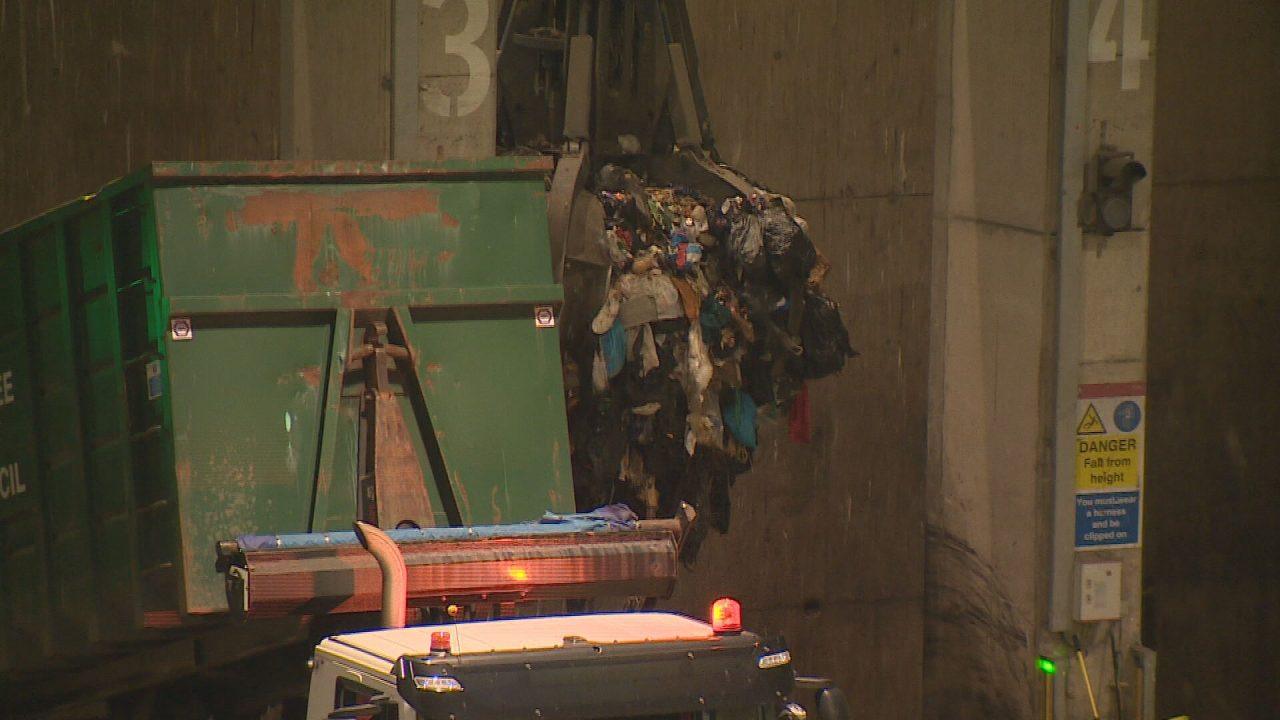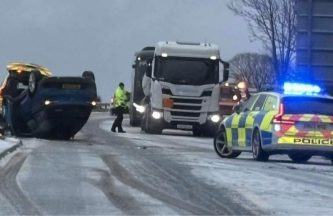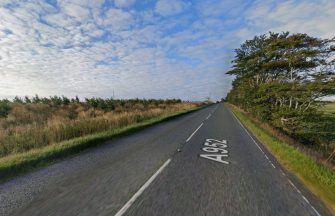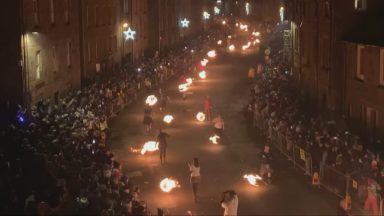The amount of waste that is sent to incinerators in Scotland to be burned has increased by more than a fifth in the past decade.
New figures show more than a quarter of rubbish is now sent to energy-from-waste facilities which generate electricity for the National Grid.
The increase comes from sending less to landfill – but environmentalists say the rising levels of greenhouse gases being pumped out is also contributing to the climate crisis.
Around 300 tonnes of non-recyclable waste arrives at the MVV Environment incineration site in Dundee every day – enough to cover a standard football pitch.
It is then burned and converted into heat and electricity.
The plant’s community liaison manager Sarah Cartmill said: “Our alternative is landfill, and landfill is much more harmful than energy from waste in regards to things like methane and leachate, which is a toxic liquid.
“We do say that we are a solution. Reduce is the main solution. We need to reduce our waste, and then we want people to recycle at home, and we only want to receive the non-recyclable waste.”
Incinerator facilities have long-term contracts with councils to manage their waste.
An automated crane lifts huge piles to a storage bunker where it is mixed together to be used as a fuel.
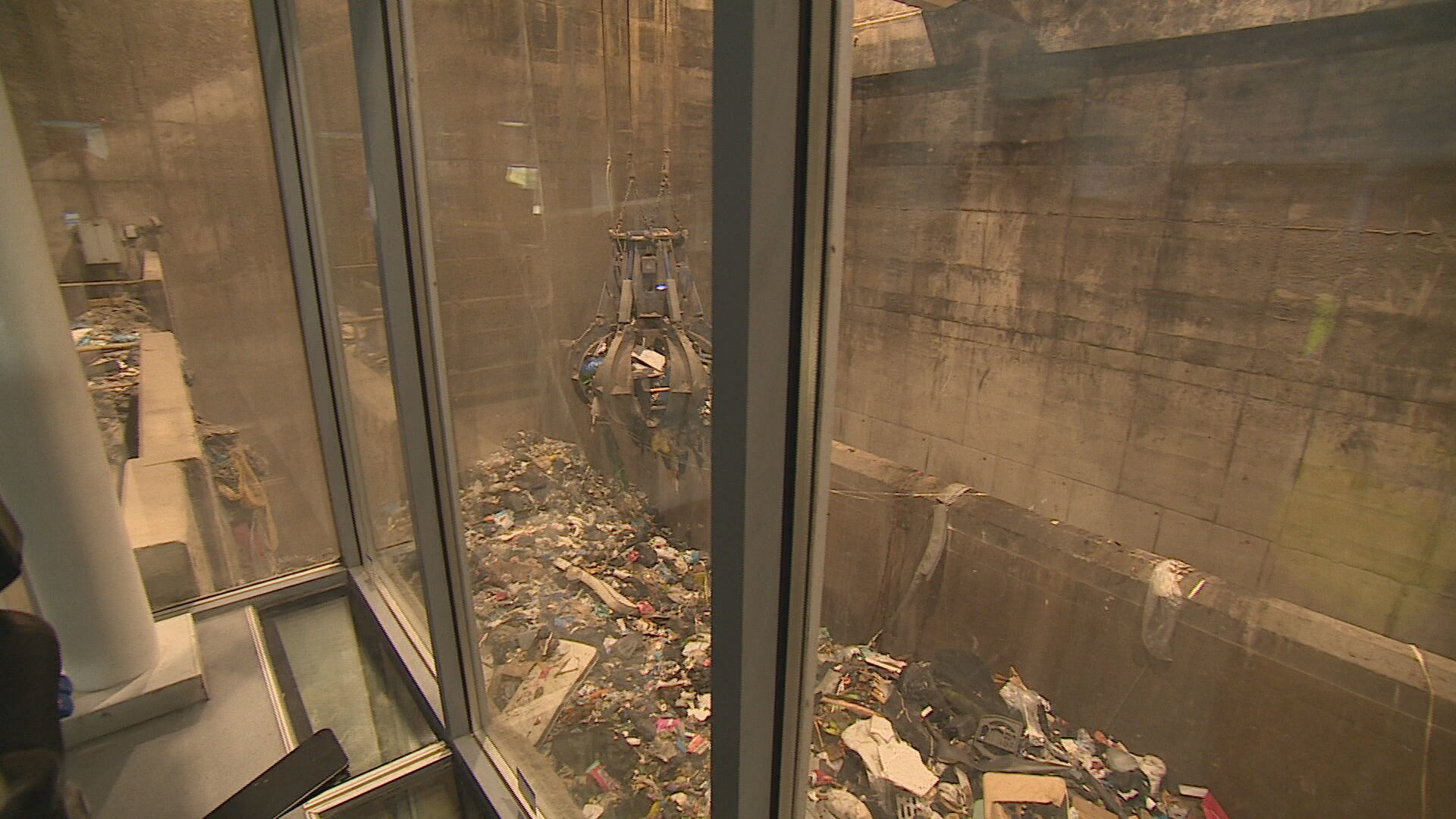 STV News
STV NewsThe waste is then passed down a chute onto a moving grate, to here, the furnace. Temperatures inside can reach more than 1,000C.
The heat turns water into steam, which turns the turbine which spins the generator to produce electricity.
Sarah added: “We have something called a flue gas treatment where all the gases are being cleaned and then our continuous emissions monitoring equipment looks after that and tells us we are staying within the parameters of our environmental permit.”
This process is becoming more widespread.
The way Scotland disposes of waste has changed since 2014, but the country still relies more on landfill than Wales and England.
In 2022, Scotland generated more than two million tonnes of household waste according to SEPA.
More than a quarter (25.9%) was incinerated with energy recovery – that is an increase of more than a fifth since 2014 (4.8%).
In that same time the amount sent to landfill has almost halved (49.3% to 25.1%).
However rates of recycling have remained static (2014 – 42.9% and 2022 – 43.4%).
East Dunbartonshire, City of Edinburgh, West Lothian, Glasgow and Midlothian are among those to see rises of about 40 percentage points since 2014.
Environmentalists believe increasing incineration is contributing directly to the climate crisis.
Kim Pratt is a circular economy campaigner at Friends of the Earth Scotland.
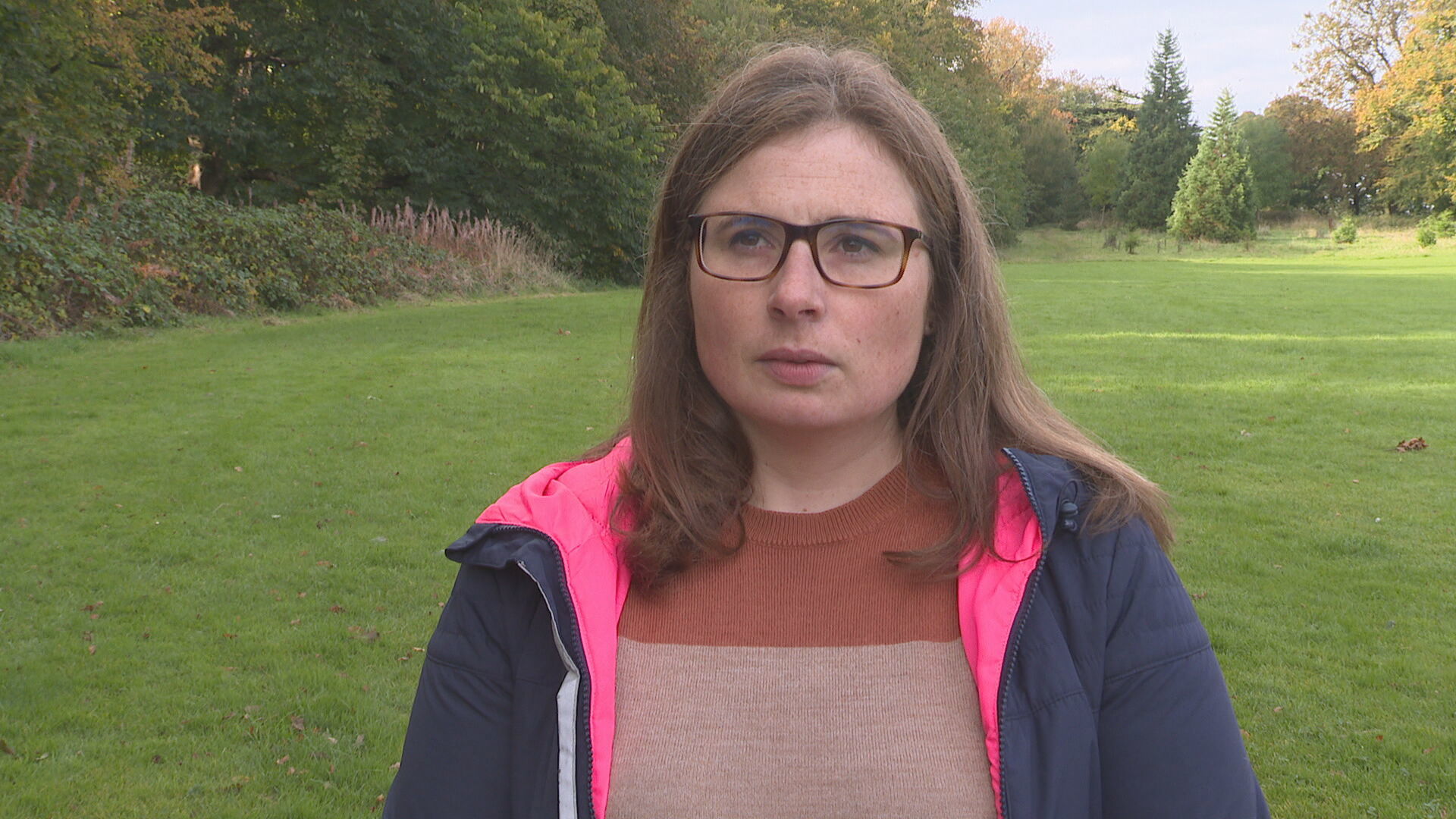 STV News
STV NewsShe said: “We are actually the worst performing nation within the UK in terms of recycling now and that is because the Scottish Government has been asleep at the wheel in terms of waste policy for many years now.
“Things like plastic, if we burn them then that’s releasing carbon emissions into the environment as well so we have to manage our waste in a better way going forward.”
The Scottish Environment Protection Agency (SEPA) says it ensures all facilities like this meet strict emission limits to protect the environment and human health.
A spokesperson for SEPA said: “Energy recovery plays a role in the safe and responsible treatment of currently non-recyclable materials which would have otherwise gone to landfill.
“SEPA carries out its permitting function in accordance with the relevant legislation and would not grant a permit where the proposed facility does not have appropriate planning consent.
“For all EfW facilities, SEPA ensures they are designed and operated to high technical standards and meet strict emission limits to protect the environment and human health.
“What is clear is that in order to reduce the need for EfW facilities, we all must strive to reduce the waste we produce and recycle as much as possible.”
Acting net zero secretary Gillian Martin said: “Scotland has a strong track record of recycling – with the overall rate at our highest level since records began in 2011 (62.3%) and the total amount of waste going to landfill in Scotland almost halving over the past decade.
“Whilst I recognise the concerns raised by campaigners, the independent review of the role of incineration in Scotland states that in the short-term, incineration will have a role to play in managing our waste as we transition to a circular economy.
“As we continue to increase our reuse and recycling rates, we will produce even less waste, however we will still need an appropriate way to manage our unavoidable and unrecyclable waste – and reduce the amount going to landfill.
“That’s why the Scottish Government’s Fourth National Planning Framework (NPF4) makes clear that development proposals for energy-from-waste facilities will not be supported, except under limited circumstances.
“To support future planning and investment decisions, we are currently developing an indicative cap for incineration capacity. This approach of limiting and reducing the amount of waste we burn, ensures that our current and future plans for waste management matches our carbon reduction ambitions.”
Reporting includes research from BBC Shared Data Unit and LDRS.
Follow STV News on WhatsApp
Scan the QR code on your mobile device for all the latest news from around the country


